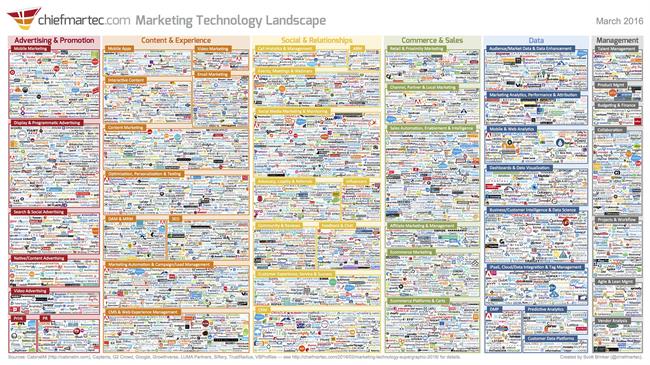Aligning Your MarTech Investments with Business Goals [A Q&A]

Not only do different departments have different desires and demands for software, but individuals also feel the pressure of presenting their case for solutions and being responsible for the outcomes. It is the opinion of some that marketing technology ("martech") suites provide the most integrated options so that data is easily accessed and shared with the ability to scale as a company grows while it is the opinion of others that companies shouldn't spend big on these solutions when they only need a few of the capabilities.
Website Magazine connected with SDL Chief Marketing Officer Peggy Chen, who seems to agree with the latter, regarding how martech can align marketing goals with business goals. Let's find out!
Why are businesses tempted to invest in an all-in-one-type marketing suite?
Peggy Chen, SDL: Many businesses prefer end-to-end marketing suites so that they don't need to spend the time assessing new vendors and connecting one-off solutions. The martech ecosystem is complex, and offers a range of point solutions to solve virtually any problem. In fact in Scott Brinker's latest marketing technology supergraphic, he cites 3,874 different martech solutions on the market. When you consider how many solutions there are, it's no wonder why so many marketers are overwhelmed, and easily distracted by feeling the need to buy the latest technology.What are some negatives and positives of doing so?
Chen: The problem with the suite approach is that while initial implementation can be convenient, it won't provide marketers with the best solution for each of their very unique needs. And, if the company wants to add on more solutions later - will they easily integrate? Customers expect the best. And this can only be achieved by implementing and combining the best technology solutions that exist on the market. Marketing suites often have a few strong offerings, but then have more watered down solutions to complete the checklist of what needs to be included in the suite. At the end of the day, marketers aren't getting exactly what they need for each business requirement.
What advantages do best-of-breed solutions offer marketers?
Chen: Choosing best-of-breed solutions guarantee marketers that they're getting the best capabilities on the market for each specific need they have. But, these organizations need to make sure it has the right integration points to existing solutions. Integration is crucial. Not just for internal purposes, but also to project a unified, consistent brand image. When internal systems are running smoothly, customer experience improves as well. Think about it: companies need to be able to share content easily across all channels their customers and prospects may be on. This requires easy integration with mobile, social and any other platform that consumers use. If there are too many disjointed tools being used, the experience from mobile to Web or social to mobile will be inconsistent and this will negatively impact the customer experience.
What are some business and IT consideration to take into account before making a MarTech investment?
Chen: At the end of the day, there is no perfect solution. While marketing suites may have a number of tools and services, one suite cannot solve every need within a business. To stay competitive, organizations need the best tools possible for each business function so they can give their customers the best experience possible, while also driving internal efficiencies. The key to a successful martech investment relies strictly on the ability to integrate. The ability to integrate maximizes the technology's potential for having a real impact on business goals and objectives. More importantly, before investing in new technology, it is important to consider if it meets the overall business' higher level objectives, goals and overarching strategy.
Anything else you'd like to add?
Chen: Technology vendors can help by embracing open partnership ecosystems to ensure customers are getting the best experience they deserve. By having this open partnership ecosystem, customers can use a variety of best of breed solutions for their specific needs. It gives businesses the flexibility they want and need - not locking them into certain vendors. Ultimately, this will help organizations build the most efficient technology toolkit to improve processes and save time and money as less manual time is spent connecting the various pieces.

Subscribe to Our Newsletter!
Latest in Software






![Aligning Your MarTech Investments with Business Goals [A Q&A]](https://www.websitemagazine.com/hubfs/Imported_Blog_Media/align_525x525-2-1-1-1.png)


